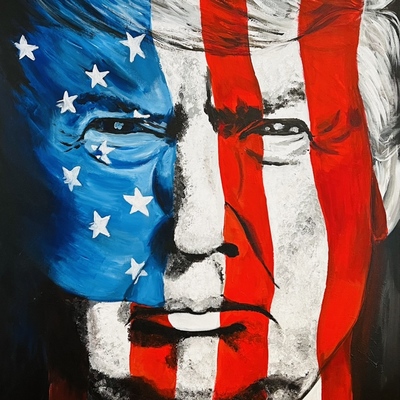
Japan Says Profits from $550 Billion U.S. Deal Will Be Shared Based on Actual Contributions
Japan Counters White House Claims on $550 Billion Deal's Profit-Sharing
TOKYO — The Japanese government on Friday clarified that profits from its landmark $550 billion investment plan with the United States will be distributed based on each country's contributions and risk exposure, contradicting earlier White House statements about a fixed 90/10 split favoring Washington.
"The resulting benefits will be shared by Japan and the United States, 10% and 90% respectively, depending on the extent of each party's contribution and the risks they bear," a Japanese government official stated at a briefing, suggesting a more nuanced arrangement than initially portrayed by U.S. officials.
The clarification comes days after the White House announced the United States would retain 90% of profits from Japan's investments and loans in exchange for reducing tariffs on Japanese automobiles from 25% to 15%.

Dueling Narratives: Profit-Sharing Becomes Diplomatic Flashpoint
The Japanese official's statement reveals significant contributions are expected not only from Japan but also from U.S. government agencies and companies, though the precise structure of the plan remains largely undefined.
This apparent disconnect between the two nations' characterizations of the profit-sharing arrangement highlights the complex, and potentially fragile, nature of the landmark trade agreement announced in July 2025.
"What we're seeing is a carefully worded diplomatic dance," notes an international trade consultant familiar with the negotiations. "Tokyo is signaling that this isn't simply Japan writing a $550 billion check to America with minimal return. They're establishing that their profits will be commensurate with their actual risk and capital deployment."
Behind the Numbers: Japan's Financial Architecture Revealed
Japan disclosed that the investment plan primarily consists of loans and guarantees from two state-owned institutions: the Japan Bank for International Cooperation and Nippon Export and Investment Insurance . These financial mechanisms are specifically designed to help Japanese companies build resilient supply chains in key industries such as pharmaceuticals and semiconductors within the United States.
A critical but underreported aspect of this arrangement is the 2023 legal revision that expanded JBIC's mandate, making foreign companies critical to Japan's supply chain eligible for loans from the bank for the first time. This legislative change laid the groundwork for the current deal, creating the legal framework necessary for Japan to extend such significant financial support to U.S.-based operations.
While the $550 billion headline has dominated financial news, market analysts examining the fine print suggest only approximately one-third represents genuine new capital flows.
"What we're seeing is roughly $140-175 billion in true lending capacity over five years," notes a senior economist at a leading Tokyo investment bank. "The remainder consists largely of recycled guarantees and co-financing commitments that may never materialize."
Financial Implications: How Markets Are Reading the Tea Leaves
"This is essentially political theater," explains an international trade consultant familiar with the negotiations. "JBIC-backed senior loans will be priced at SOFR plus 80-120 basis points and secured against assets. The much-touted '90%' refers only to residual equity upside after debt service—a pool that will likely be far smaller than the public narrative implies."
The Nikkei index surged 3.5% following the announcement, with Japanese auto manufacturers seeing gains between 10-14%. Conversely, U.S. automotive stocks dropped 4-6% intraday as investors priced in potential margin erosion from increased competition.
Currency markets reacted immediately, with USD/JPY briefly testing ¥164 before settling at ¥162.8. The net outward flow from Japan creates near-term yen weakness, though analysts project coupon reflows (dollar interest paid back to JBIC) will create a neutral balance by 2027.
Targeted Industrial Renaissance or Diplomatic Mirage?
The investment framework specifically targets five strategic sectors: semiconductors, pharmaceutical supply chains, automobiles, energy (particularly LNG), and critical minerals.
In the semiconductor space, approximately $120-150 billion in fabrication and tooling loans will prioritize Japanese lithography sub-segments. This represents the largest sectoral allocation, reflecting both countries' concerns about supply chain resilience in the wake of recent global disruptions.
The pharmaceutical focus centers on green-field API (Active Pharmaceutical Ingredient) manufacturing plants planned for Ohio and North Carolina, areas that have experienced significant manufacturing job losses over recent decades.
Tariff Relief: The Fine Print
While the reduction of Japanese automobile tariffs from 25% to 15% represents a significant victory for Tokyo, market experts point out a crucial limitation: the cut expires in 2029 unless Congress codifies it into permanent law.
"Detroit manufacturers are already mobilizing to lobby for a snap-back clause," reveals a Washington-based trade policy expert. "The temporary nature of this relief introduces significant uncertainty for long-term Japanese investment in U.S. automotive supply chains."
Furthermore, the tariff reduction applies exclusively to Japanese imports; the 25% rate remains in place for other countries, raising questions about potential WTO challenges from Mexico, South Korea, and other automotive exporters.
Institutional Architecture: JBIC's Expanded Role
The 2023 revision of Japan's JBIC Act plays a pivotal role in enabling this arrangement, having broadened the institution's mandate to extend loans to foreign companies critical to Japan's supply chains.
However, statutory limitations cap single-obligor exposure at 40% of Tier-1 capital, establishing an effective ceiling of approximately $50 billion per borrower group—a constraint that could limit flexibility as projects scale.
Market Signals and Investment Implications
Currency markets reacted immediately, with USD/JPY briefly testing ¥164 before settling at ¥162.8. The net outward flow from Japan creates near-term yen weakness, though analysts project coupon reflows (dollar interest paid back to JBIC) will create a neutral balance by 2027.
In credit markets, expectations center on $30-40 billion of JBIC-guaranteed Reg-S issuance with shadow ratings of AA/Aa2. These instruments are projected to price 20-25 basis points through comparable supranationals, likely attracting significant interest from Asian banks.
Investment Perspective: Where Smart Money Might Flow
Based on current market data and established economic indicators, several potential investment approaches emerge from this agreement. Analysts suggest that Japanese exporters and selected U.S. capital expenditure plays may show positive momentum in the near term, while JBIC-wrapped paper could offer yield pickup with sovereign-like risk profiles.
In the semiconductor sector, some analysts favor Tokyo Electron relative to the broader SOX index, as TEL stands to gain both volume and IP leverage, while U.S. wafer makers may see diluted returns through profit-sharing arrangements.
For the critical minerals space, junior miners with Nevada lithium projects could benefit from off-take financing, though regulatory approval timelines remain a key risk factor.
Medium-term outlook appears more measured, with analysts suggesting spread compression will likely fade as project cash flows lag behind political timelines. The deal's embedding of U.S. political discretion into Japanese capital allocation decisions creates what one analyst called "a Faustian bargain Tokyo may regret" once the full implications of the veto power become apparent.
Investment Thesis
| Category | Key Details |
|---|---|
| Size | Only ~⅓ ($140-175bn) is net-new capital; rest are guarantees/co-financing that may never be drawn. |
| Profit Split (90/10) | U.S. claims 90% of residual equity upside after debt service (SOFR + 80-120bp secured loans), which is smaller than implied. |
| Tariff Relief | Auto tariffs drop to 15% but expire in 2029 unless Congress acts; Detroit lobbying for snap-back. |
| Governance | Trump’s "golden-share" veto introduces political risk; credit committees must price +50-75bp idiosyncratic spread. |
| Equities | Nikkei +3.5% (autos +10-14%); U.S. autos -4-6% on margin fears. |
| FX | USD/JPY at ¥162.8; yen weakens short-term but neutral by 2027 due to coupon reflows. |
| Credit | $30-40bn JBIC-guaranteed Reg-S issuance (AA/Aa2) to price 20-25bp through supras. |
| Sector Opportunities | Semiconductors: Long Tokyo Electron vs short SOX ETF. Pharma APIs: Mezzanine tranches at SOFR +450bp. Autos/EV: Long Denso/Aisin vs short GM. LNG/Shipbuilding: Book Samsung Heavy. Critical Minerals: Warrants in Lithium Americas. |
| Legal Frictions | JBIC Act: $50bn borrower cap. Section 232 Tariffs: 25% remains for non-Japanese imports; WTO litigation risk. Golden-Share Veto: Oval Office sign-off required for fund actions. |
| Macro Views | Japan Reflation: Overweight Nikkei, underweight JGBs. U.S. Industrial Policy: Neutral (capex vs diluted returns). Geopolitical Risk: Buy VXMT calls (Q4 2026 volatility cheap at 19 vol). |
| Open Questions | 1. Front- or back-loaded spending? 2. Who bears subordinated losses? 3. WTO challenges? 4. China’s response (semiconductor subsidies)? |
| Bottom Line | Near-term: Positive for Japanese exporters/U.S. capex; chase JBIC paper. Medium-term (2026-28): Spread compression fades; election risks. Strategic: Supply chains shift westward, but U.S. veto embeds political risk in Japanese capital allocation. |
Note: Past performance does not guarantee future results. Readers should consult qualified financial advisors for personalized investment guidance.